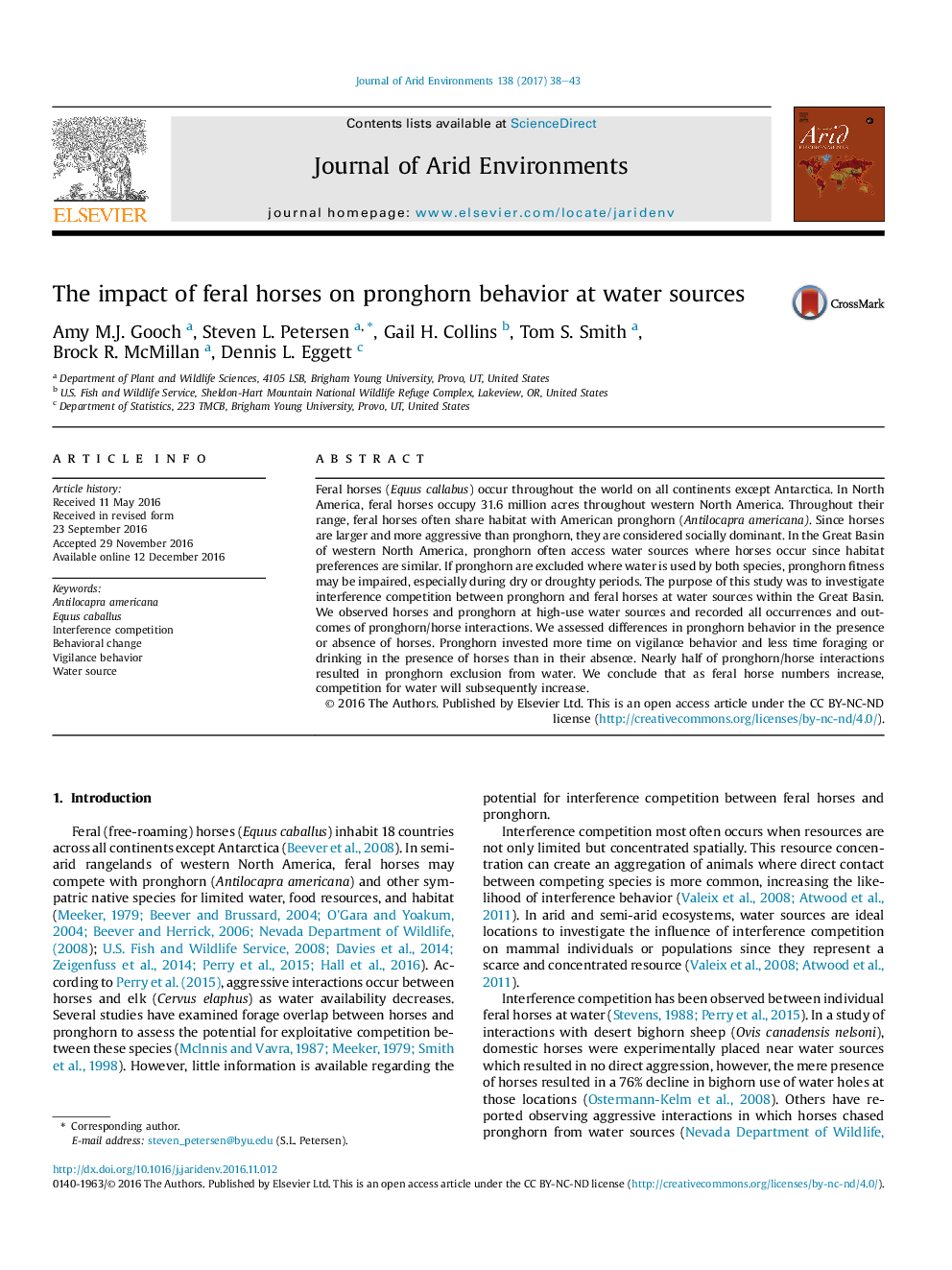| کد مقاله | کد نشریه | سال انتشار | مقاله انگلیسی | نسخه تمام متن |
|---|---|---|---|---|
| 5744334 | 1618221 | 2017 | 6 صفحه PDF | دانلود رایگان |
- Pronghorn invested more time with vigilance behavior in the presence of horses.
- Pronghorn invested less time foraging and drinking in the presence of horses.
- Nearly ½ of pronghorn - horse interactions resulted in the exclusion of pronghorn from water.
- Interference competition can have detrimental impacts on pronghorn fitness.
Feral horses (Equus callabus) occur throughout the world on all continents except Antarctica. In North America, feral horses occupy 31.6 million acres throughout western North America. Throughout their range, feral horses often share habitat with American pronghorn (Antilocapra americana). Since horses are larger and more aggressive than pronghorn, they are considered socially dominant. In the Great Basin of western North America, pronghorn often access water sources where horses occur since habitat preferences are similar. If pronghorn are excluded where water is used by both species, pronghorn fitness may be impaired, especially during dry or droughty periods. The purpose of this study was to investigate interference competition between pronghorn and feral horses at water sources within the Great Basin. We observed horses and pronghorn at high-use water sources and recorded all occurrences and outcomes of pronghorn/horse interactions. We assessed differences in pronghorn behavior in the presence or absence of horses. Pronghorn invested more time on vigilance behavior and less time foraging or drinking in the presence of horses than in their absence. Nearly half of pronghorn/horse interactions resulted in pronghorn exclusion from water. We conclude that as feral horse numbers increase, competition for water will subsequently increase.
Journal: Journal of Arid Environments - Volume 138, March 2017, Pages 38-43
